There’s a huge public appetite for reducing plastic in retail, but there’s more to establishing a successful refillable solution than meets the eye. C-Store looks at the issues to consider
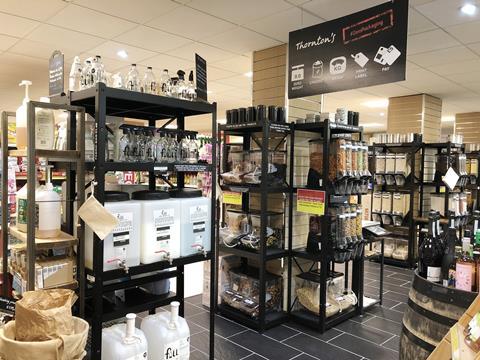
With plastic now being seen as public enemy number one, a growing number of retailers are investing in refillable solutions, allowing their customers to actively reduce plastic waste and keep a lid on food wastage by not buying more than they need.
Consumer appetite for such solutions certainly appears to exist. According to a survey of 2,004 Christmas shoppers by consultancy Given London, minimising waste by reducing packaging was something that 65% said they wanted to see.
“The trend for zero waste retail is developing exponentially, thanks to the current consumer focus on reducing single-use plastics, helped in no small part by the Blue Planet effect,” says Catherine Conway, founder of Unpackaged, which operates a number of refill concessions in Planet Organic and can also design and set up refill systems for convenience retailers. She reports unprecedented demand for its work, from both small independents to large retailers, brands, manufacturers and supply chain companies.

Retailers who have invested in refillable ‘zero waste’ offers are claiming equally positive results, with sales of groceries from refillable solutions regularly outselling their packaged equivalents. Andrew Thornton, whose award-winning Budgens store in Belsize Park in North London started offering a wide range of dried goods in refill stations in November, says that sales of products from plastic-free zones grew by 6% in the two weeks following the launch “and are now consistently 4% ahead of where we had been”.
In addition, sales of refillables at Waitrose’s four Waitrose Unpacked shops, where it is currently trialling the sale of a number of products out of their packaging, are outselling their packaged equivalent by 68%.
But as on-trend as offering a refill solution may be, and as much as shoppers claim to want it, implementing a professional-looking solution still remains far from a simple case of fill and go, especially for the wider independent retail trade which may not have the same resources and insights as the national chains and more specialist stores, and where space can be a major hurdle.
Mital Morar agrees that the issue of space on the shop floor needs to be considered. He has a refill station for packaging-free products in his Stretford Foodhall in Manchester city centre and plans to open another in his new Groceries & Beer store in nearby Sale early this year. Mital says: “Refillable offerings take up lots of space. If you’re going to offer rice from a refill, for example, you will probably need to consider reducing packaged rice on the shop floor.”
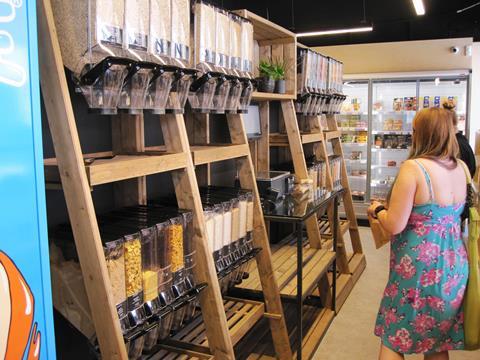
In Brighton, East Sussex, ethical food retailer Hisbe sells well over 100 different refillable dry foods, plus oils and household products. It has been forced to take aggressive action to tackle the problem of storing refillable goods off the shop floor.
Hisbe operations director Jack Simmons explains: “Large 25kg sacks take up lots of space so we’ve had to invest in knocking down walls and extending the store room,” he says.
Housing large and pricey bulk bags also requires a focus on hygiene standards and hazard awareness, he points out. “Our store is surrounded by takeaways and restaurants and with sacks of grain notoriously attractive to pests we’ve had to take concerted action from the start to ensure that the stock room is fully protected against rodents,” Jack adds.
“Another challenge is that the bags themselves split quite easily. If you hit one accidentally with the corner of a metal roll cage or trolley, chances are it will tear, forcing us to dispose of the contents so we have to be really careful when handling them or manoeuvring around them.
“The bags are also incredibly heavy so staff have to be careful so as not to injure themselves when manoeuvring them,” he says.
And with the best will in the world, allowing shoppers to fill their own containers in-store can also be rather messy – meaning that retailers offering a refill solution also need to be on point with cleaning.
“Children in-store can certainly be a big challenge,” laughs Jack, “but actually it’s not just kids. Adults can be pretty messy, too. Lots of people who are new to the concept don’t realise at first that many of the containers are free-flow, so when they open the tap, the contents will just start to run. We’ve seen people holding tiny paper bags under large dispensers and watched in horror as five kilos of rice spill out all over the place.”
Andrew says that constant monitoring of the section is needed to ensure that spills are cleaned up instantly, in a bid to keep the offer looking appealing and safe. Large rubber mats beneath liquid dispensers ensure that drips don’t lead to slips, and the mats are cleaned and replaced on a regular basis.
“There are challenges to operating a refill offer,” he says. “The section requires constant supervision and it’s certainly not as straightforward as just placing packs on shelves,” he says. “Units also need to be refilled constantly so that they don’t run empty; it’s not necessarily more work for staff, though, it’s just a different type of work,” he says.
“Staff also have to take care not to confuse products when refilling the containers and, likewise, confused shoppers starting to refill with the wrong products and realising their mistake halfway through can also result in mess and wastage, meaning really clear messaging and labelling on the containers is key,” he adds.
Wholefood wholesaler Suma supplies a wide range of refillable products and works with retailers and specialist shopfitters to create refill stations. Co-operative member and senior sales rep Andrew Mackintosh says any refill area needs to be clear and avoid confusion. “A how-to-use graphic and a catch-all allergens statement need only be used once, then the product price, best-before date and country of origin are all that need to be stated on the dispensing units themselves,” he advises.
Andrew Thornton’s refill offer, which was designed in partnership with HT Display, is well supported with lots of clear and simple consumer messaging explaining exactly how the offer works, and staff are on hand to alleviate any confusion or concerns.
Like other refill retailers, his system allows shoppers to weigh their own containers on scales prior to filling, with the weight of the empty container then deducted once it is filled. Shoppers can also choose to fill up using the store’s brown paper bags, although in the next few months Andrew plans to focus on driving shoppers away from paper and building momentum for shoppers to bring their own bags or containers in.
“We are seeing a growing number of people starting to bring their own containers into the store to refill and I would say that about 20% of them now do, particularly for the milk and water refills, but clearly there’s much more to be done. These things take time, though,” he says. “We’re talking about a whole change of mindset and shopping habits and that doesn’t happen overnight.”
Mackintosh agrees that it can’t be presumed that consumers are going to bring their own bags or containers, “so make sure there are plenty available at the point of sale”. “This also provides a chance to reinforce store branding and even create another revenue stream whereby the store sells Kilner jars, reusable non-plastic bags and the like.”
Andrew recognised the potential here early on and his store features a non-food ‘eco station’ which sells a broad range of vessels and containers for shoppers to buy and store their goods in at home.
Changing habits
Jack says the biggest misconception is that shopping a refillable section means you have to come in armed with a mountain of Kilner jars. “Some shoppers are really ahead of the game and we’ve even seen one who has adapted a bicycle to carry a large number of re-usable containers home, but that’s certainly the exception rather than the norm.
“People just need to start getting into the habit of buying goods in small material draw-string bags and then decanting the contents into whatever fancy glass jars or containers they wish once at home. Communicating that message is an ongoing challenge, but it’s one we are actively looking to overcome with consumer messaging in-store and on social media.”
Another challenge is sourcing the refillable solutions themselves. While there are a number of companies out there which offer professional-looking and functional refill solutions for dried groceries such as pasta, grains and cereals, solutions for wet and fresh goods are much harder to come by – or very expensive.
Jack explains: “We still face a number of challenges when it comes to sourcing the containers for dispensing products, especially on the liquids side, or for chilled items. We’ve tried to design a number of different systems ourselves using hosepipes and even pub pump systems, but these aren’t perfect either. The pub system, for example, flowed really well but with time started to clog, and the hosepipe systems took too long to refill from. We are on the cusp of solving this, though, as we’ve found an independent engineering company in London who think they might be able to custom-make some of our ideas.”
It’s a big step forward, as the store is keen to expand its offer into other liquid products. “Take houmous, for example. Everyone loves it, but the waste produced by all those little plastic tubs is terrible. We’re currently thinking about how we could find a solution to dispense houmous on tap. We’d need a Mr Whippy-style machine that could also keep it refrigerated and is, of course, clean and hygienic. And if we could do houmous, maybe we could do crushed avocado? It would certainly help to slash food waste.”
Trial and error
Andrew agrees that launching a successful refill offer often involves some trial and error before the “perfect” solution is found. For example, unforeseen technical problems mean the store’s headline-grabbing peanut butter on tap machine is currently out of service.
Trial and error also came into play when Andrew removed plastic packaging from a range of other packaged goods in the store, such as fresh bread and cheese. “Moving to wax wrappers for cheese worked well from a technical point of view, but then we realised that it meant shoppers couldn’t see the cheese through the packaging, which they didn’t like. In the end we sourced a clear compostable film which is working much better.”
Price is another issue. While many products, most notably dried goods, are cheaper to purchase via a refill system, others such as eco homecare, cleaning and beauty products can be a good deal pricier than big-brand packaged alternatives.

That’s why Sid Sidhu, owner of St John’s Budgens in Kenilworth, Warwickshire, is so enthused about a new initiative he’s just launched in partnership with LocoSoco and Delphis Eco.
“I think that with the right advice, support and products and crucially price, refillable goods could be really, really big for the convenience industry, but price both for retailers and for consumers will be key if it’s ever to become more than a niche offering in certain areas,” he says.
Sid’s value-priced eco refill station offers shoppers the chance to refill from three different environmentally-friendly cleaning liquids and sanitisers. The products – a washroom cleaner, a multi-purpose cleaner and an antibacterial sanitiser – are sold in a highly-concentrated shot form, which shoppers then dilute with water at home.
“Customers can buy a bottle from the store in the first instance for £2.99, but after that it just costs £1 for a refill if they bring the bottle back,” explains Sid. “It’s far cheaper than other eco-refill products out there and as such is causing something of a stir among local shoppers because the general perception is that these types of products are normally quite expensive,” he says.
As Sid proves, getting into refills doesn’t have to include a full-blown offer – any change, no matter how small, counts when it comes to combating plastic waste.
Convenience retailers looking to move into refills certainly shouldn’t be afraid to have a go, however small the first step may be, advises Conway at Unpackaged. “Convenience retailers are well-placed to offer refills thanks to their position at the heart of residential communities, which is the perfect environment to offer refills,” she says. “Get stuck in, don’t aim for perfection, just try different things, but communicate with your customers as you go so you take them on the journey with you. In the current climate they will be expecting you to take action.”
Jack adds: “At the end of the day, surely it’s better to have lots of people trying really hard to make a difference and doing it slightly imperfectly, than just a small handful doing it perfectly. No-one is going to become a perfect eco-warrior from day one. In order to drive real change you need to take a few spills along the way.”
Don’t fall foul of the law
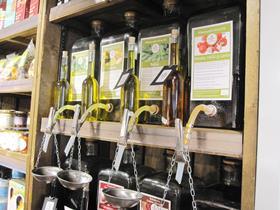
There is a raft of legislation relating to the correct storage and labelling for the sale of refillable goods that retailers need to be aware of.
Hisbe recently fell foul of EU legislation on the sale of extra virgin olive oil implemented in 2012 that decreed oil must be sold only in a ‘sealed’ bottle or container that can’t be ‘re-sealed’ after the first time it is opened.
The sustainable store in Brighton, East Sussex, had been selling responsibly-sourced extra virgin olive oil from a large metal container with a tap. The legislation states that extra virgin, virgin and olive oil composed of refined olive oils and virgin olive oils should never be sold “on tap” in their pure form.
However, the same law does not apply to olive oil infused with different flavours such as garlic, chilli or truffle.
Labelling restrictions also apply. Olive oils infused with other substances must not be labelled with terms for pure olive oil. For example, labels cannot read ‘Extra virgin olive oil infused with garlic’.
ACS Assured Advice on in-store water refills
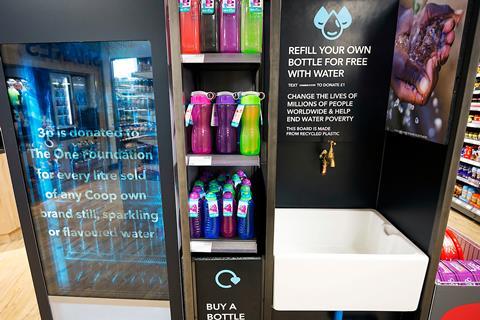
Service: There are two main ways to offer a water refill service to customers: A member of staff can take a customers’ container and fill it up from a tap somewhere behind the till; or retailers can provide a tap on the shop floor.
Security: Providing a refill offer can present some security concerns, particularly theft. “You should consider whether to offer a water refill service during times when the business is operating with only one member of staff on the shop floor, for example on a forecourt during the night shift,” the advice states.
Containers: Stores should “only accept clean containers when providing a staff-operated water refill service,” as they raise potential health and safety issues.
Commercial: If you do not sell alcohol on the premises for immediate consumption, there is no requirement to provide it for free. You may want to consider requiring customers to make a purchase in store to be able to fill up their container for free, or whether to charge for the service itself.
Drinking water: Ensure that the tap you provide water from is mains-fed and not from a tank on the premises.









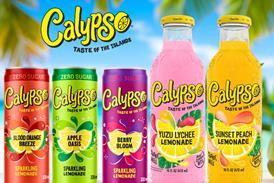

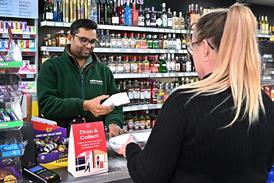








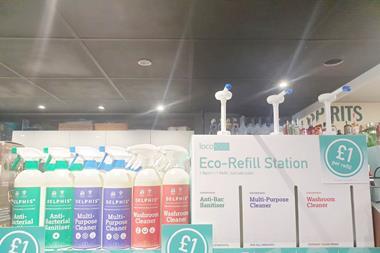
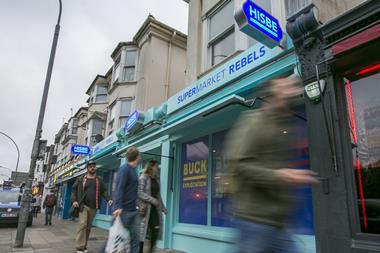
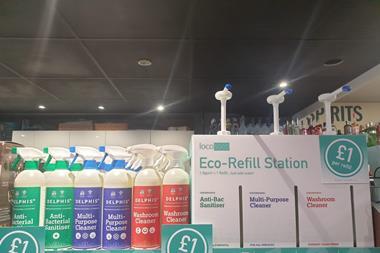

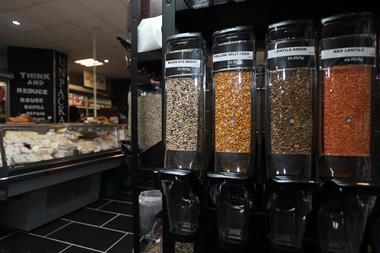

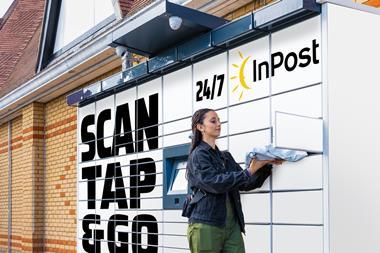





No comments yet